Not for a reunion. For a CD release. If you haven’t followed the history of this seminal ’60s pop band, you probably don’t realize just how momentous this is.
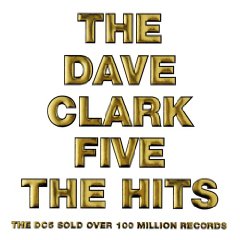 The DC5, probably the Beatles’ biggest rivals in the early-to-mid 1960s in the singles market, haven’t had an official best of compilation in nearly two decades. The only one of note, The History Of The Dave Clark Five, a double-disc from 1993, has been out of print for years and until this release, has fetched rather lofty figures, nearing $100 on eBay.
The DC5, probably the Beatles’ biggest rivals in the early-to-mid 1960s in the singles market, haven’t had an official best of compilation in nearly two decades. The only one of note, The History Of The Dave Clark Five, a double-disc from 1993, has been out of print for years and until this release, has fetched rather lofty figures, nearing $100 on eBay.
Most imports available have been spotty affairs with one grey-market company producing the most comprehensive collection of releases by mastering from vinyl.
The Hits, released late last year, rectifies all this. A single disc with 28 tracks, it touches on most of the band’s signature tunes along with some lesser known tracks and a previously unreleased bonus, Universal Love.
So why the wait? Only Dave Clark can answer that and he is never that forthcoming on these topics. It’s probably to take advantage of the group’s induction last year into the Rock ‘N Roll Hall of Fame, an honor the DC5 richly deserves.
A booklet accompanying the CD is rather sketchy in some areas, for instance about the other members of the band, but big on statistics and the group can boast some impressive ones. The DC5 is said to have sold more than 100 million records worldwide. I don’t doubt it. They scored 15 consecutive Top 20 hits and 30 global hit singles, only outpaced by the Beatles. They appeared a record 17 times on the Ed Sullivan Show, the Sunday night ’60s TV staple on which the Beatles first appeared, and sold out Carnegie Hall for a record 12 shows over three days.
Unfortunately the booklet does not give any interesting tidbits about the tracks, for instance when and where each was recorded and where each single charted. Instead, it’s a glad-handing, back-slapping tome to Dave Clark, who played a very dominant role in the group’s history, which is to say the least a rather fascinating and somewhat strange one.
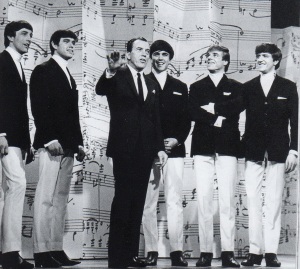 Dave Clark, who for those who don’t know, was the drummer setting up in front of the band live. He was also the group’s producer, long before most artists decided to produce themselves. He, in fact, owned all the recordings and basically leased them to major record labels, unheard of at the time. He co-wrote most of the band’s original material with vocalist/keyboardist Mike Smith, although he is credited with solo efforts on Because and Any Way You Want It. And to top it off, he managed the band! Quite a business man. Suffice to say he has controlled everything regarding the DC5 over the years.
Dave Clark, who for those who don’t know, was the drummer setting up in front of the band live. He was also the group’s producer, long before most artists decided to produce themselves. He, in fact, owned all the recordings and basically leased them to major record labels, unheard of at the time. He co-wrote most of the band’s original material with vocalist/keyboardist Mike Smith, although he is credited with solo efforts on Because and Any Way You Want It. And to top it off, he managed the band! Quite a business man. Suffice to say he has controlled everything regarding the DC5 over the years.
What’s odd is that there is scant mention of the other members in the booklet’s liner notes. And they truly deserve much more, especially Smith, who creatively and vocally was the heart and soul of the DC5. For the record the others were Denis Payton, tenor and baritone saxes, Rick Huxley, bass and Lenny Davidson, guitar.
Though the band never matched the totality and depth of the Beatles’ creativity, the DC5 gave the Beatles a run when it came to the two-minute arena of the hit single. All the great tracks are here: their cover of the Contours’ Do You Love Me, Glad All Over, Bits And Pieces, Can’t You See That She’s Mine, Everybody Knows, Wild Weekend, Catch Us If You Can, I Like It Like That, Over And Over and many more.
Most other bands of the ’60s British Invasion shared something in common soundwise with the Beatles. The DC5 sounded different. They were unique, trademarked by a soul and R&B influence layered on top of the pounding, driving beat laid down by Clark.
A regrettable circumstance: two of the members had passed away by the time the group was inducted into the Hall. In September 2003, about six months after his only son died in an auto accident, Mike Smith, who was living in Spain, fell near his home, causing a severe spinal cord injury. The accident left him paralyzed from the waist down and in his right arm. He had recently gone back to performing, including many of the DC5’s hits and had successfully played in the U.S. on club tours twice, including Toad’s Place in New Haven, with plans to return. He died on February 28, 2008, 11 days prior to the induction ceremony. Danis Payton died of cancer at 63 on December 17, 2006.
The Bram Rigg Set, who I mentioned in a previous post and for whom I played bass at the time, opened for the DC5 at the Oakdale in the summer of 1967, right before I was off to school in Boston. We talked briefly with a couple of the members, Payton and Huxley, as they whisked through the dressing room area, which they didn’t really use. Very nice fellows. Dressed in white bell-bottoms and brightly-colored, puffy-sleeved shirts and scarves, they ran through their hits quite competently and added in an ample dose of U.S. soul covers, which really showed how much Smith meant to the band. He was by far the core of the band’s creativity with an outstanding voice. But they lacked something. It wasn’t the DC5 of the early ’60s, who rivaled the Beatles, although I’m sure they were still doing quite well financially. It was a couple of years later in 1970 that they broke up, with very little chart success in the U.S. once the age of psychedelia took over.
Still, quite a band for the time. And all those hits. And that pounding beat. I’m in pieces bits and pieces. Since you left me and you said goodbye. I’m in pieces bits and pieces. All I do is sit and cry.
A word about the sound of the CD. The remastering job by, who else, Dave Clark, is very well done. He captures the DC5’s mini wall-of-sound, which came from only five pieces. Very big sound and as clear as a wall-of-sound can be.
The disc is an import but available in the States. The only problem is that it’s kind of expensive. At Collector’s Choice Music, which seems to have the corner on the release at the moment, it’s $30, although I’ve seen the price come down from some vendors in Goldmine Magazine. The best thing to do is buy it from Amazon in the UK. It’s 10 pounds, which is about $15. Even with the shipping, it’s less than 20 bucks. Highly recommended.

 I don’t recall anyone buying the mono version. Perhaps if you couldn’t afford the $1 extra for stereo, because that’s all it was. But that’s not the point. The way to listen to Sgt. Pepper’s back then, as it is now, was in stereo.
I don’t recall anyone buying the mono version. Perhaps if you couldn’t afford the $1 extra for stereo, because that’s all it was. But that’s not the point. The way to listen to Sgt. Pepper’s back then, as it is now, was in stereo. These two also are the only ones with three versions released over the various formats of the series. Both are available in stereo and can be purchased individually or as part of The Beatles Stereo box set. Those versions are the 1987 re-mixes by producer George Martin, the same mix as the original CD releases from the late ’80s but of course remastered.
These two also are the only ones with three versions released over the various formats of the series. Both are available in stereo and can be purchased individually or as part of The Beatles Stereo box set. Those versions are the 1987 re-mixes by producer George Martin, the same mix as the original CD releases from the late ’80s but of course remastered. She came clearly into the public conscience after her recording of Jack Nitzsche and Sonny Bono’s Needles and Pins in 1963 and followed it with her own When You Walk In The Room. In 1964, both songs became hits for the English band The Searchers.
She came clearly into the public conscience after her recording of Jack Nitzsche and Sonny Bono’s Needles and Pins in 1963 and followed it with her own When You Walk In The Room. In 1964, both songs became hits for the English band The Searchers. For details about the project, including specific mastering techniques, as well as a wealth of other information on The Beatles, check out
For details about the project, including specific mastering techniques, as well as a wealth of other information on The Beatles, check out  Sebastian’s charming and engaging style of entertaining creates an immediate connection with his audience as he mixes interesting anecdotes from his career with a type of humor that is so easy to relate to, especially for his contemporaries as he puts it.
Sebastian’s charming and engaging style of entertaining creates an immediate connection with his audience as he mixes interesting anecdotes from his career with a type of humor that is so easy to relate to, especially for his contemporaries as he puts it.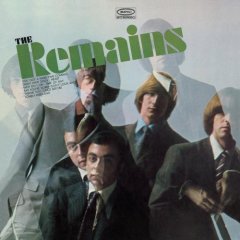 The Remains were known for their intense live shows and I was lucky enough to see them twice, once in their neighborhood and once as the opening act for the Beatles at Shea Stadium on the Fab Four’s last tour (1966) of the States.
The Remains were known for their intense live shows and I was lucky enough to see them twice, once in their neighborhood and once as the opening act for the Beatles at Shea Stadium on the Fab Four’s last tour (1966) of the States.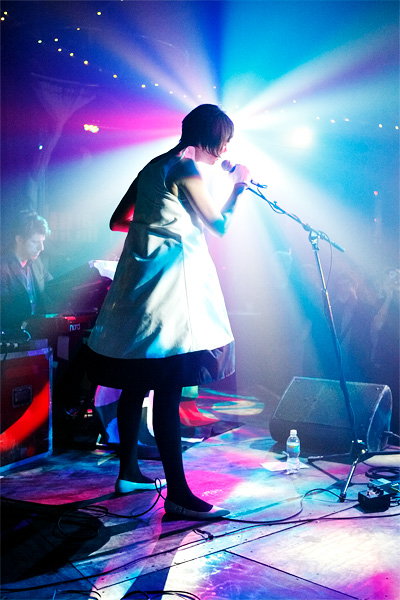 Imara George stopped singing, although her partner keyboard player Greg Kurstin continued vamping on the chords of the intro, and asked, “Are you all right?” Then when she’d seen he recovered, she laughed and the audience broke into laughter as well. She said, “I didn’t mean to laugh but after he said he was all right, I realized it was kind of funny. Don’t worry I do shit like that all the time.” More laughter. Then she repeated the opening line of Ray Gun from their latest release Ray Guns Are Not Just The Future and was fully immersed in their set, a wonderful mix of pop/rock melodies ladened with jazz sensibilities and George’s sense of humor.
Imara George stopped singing, although her partner keyboard player Greg Kurstin continued vamping on the chords of the intro, and asked, “Are you all right?” Then when she’d seen he recovered, she laughed and the audience broke into laughter as well. She said, “I didn’t mean to laugh but after he said he was all right, I realized it was kind of funny. Don’t worry I do shit like that all the time.” More laughter. Then she repeated the opening line of Ray Gun from their latest release Ray Guns Are Not Just The Future and was fully immersed in their set, a wonderful mix of pop/rock melodies ladened with jazz sensibilities and George’s sense of humor. The DC5, probably the Beatles’ biggest rivals in the early-to-mid 1960s in the singles market, haven’t had an official best of compilation in nearly two decades. The only one of note, The History Of The Dave Clark Five, a double-disc from 1993, has been out of print for years and until this release, has fetched rather lofty figures, nearing $100 on eBay.
The DC5, probably the Beatles’ biggest rivals in the early-to-mid 1960s in the singles market, haven’t had an official best of compilation in nearly two decades. The only one of note, The History Of The Dave Clark Five, a double-disc from 1993, has been out of print for years and until this release, has fetched rather lofty figures, nearing $100 on eBay. Dave Clark, who for those who don’t know, was the drummer setting up in front of the band live. He was also the group’s producer, long before most artists decided to produce themselves. He, in fact, owned all the recordings and basically leased them to major record labels, unheard of at the time. He co-wrote most of the band’s original material with vocalist/keyboardist Mike Smith, although he is credited with solo efforts on Because and Any Way You Want It. And to top it off, he managed the band! Quite a business man. Suffice to say he has controlled everything regarding the DC5 over the years.
Dave Clark, who for those who don’t know, was the drummer setting up in front of the band live. He was also the group’s producer, long before most artists decided to produce themselves. He, in fact, owned all the recordings and basically leased them to major record labels, unheard of at the time. He co-wrote most of the band’s original material with vocalist/keyboardist Mike Smith, although he is credited with solo efforts on Because and Any Way You Want It. And to top it off, he managed the band! Quite a business man. Suffice to say he has controlled everything regarding the DC5 over the years.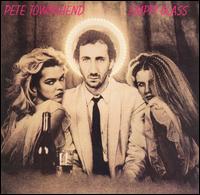 Containing two of his most familiar tracks, Rough Boys and Let My Love Open The Door, both successful singles, the album is more pop-rock oriented than anything in his repertoire since the early days of the Who. But there is more than those signature tunes.
Containing two of his most familiar tracks, Rough Boys and Let My Love Open The Door, both successful singles, the album is more pop-rock oriented than anything in his repertoire since the early days of the Who. But there is more than those signature tunes.